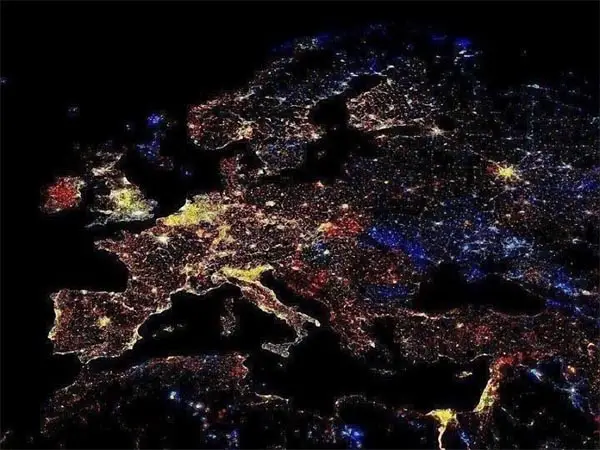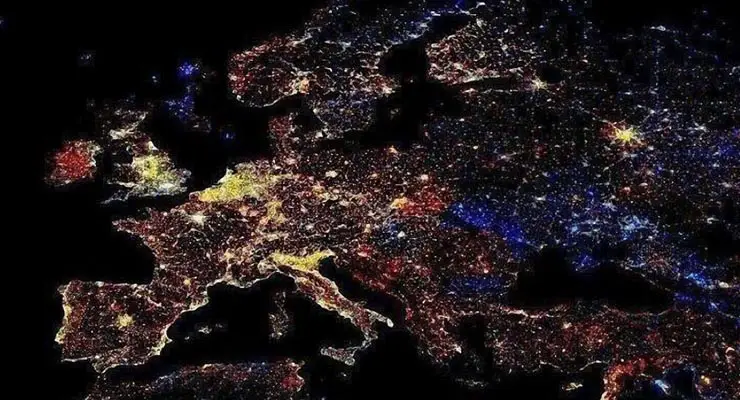Does a photo show New Year fireworks in Europe from space? Fact Check
A photo is circulating social media that claims to show a satellite image of the New Year’s fireworks across Europe, as seen from space.
However, this isn’t the first time this photo has spread across social media. In fact, with varying degrees of success, the photo below has spread across the likes of Twitter and Facebook for the last 5 or 6 years. Always claiming to show satellite images of the fireworks for the New Year’s celebrations just past.

However, the photo isn’t just old. It’s also got nothing to do with New Year’s or fireworks. The reality is that the photo doesn’t show fireworks at all, nor was it likely to have been taken on New Year’s.
In fact, the photo is a composite image from the National Oceanic and Atmospheric Administration (NOAA) and shows the changes in light intensity in Europe between the years 1993 and 2003.
Sponsored Content. Continued below...
According to Science Photo Library, the different coloured lights in the image illustrate differences in light intensity during that decade. For example, dark blue lights are an example of lights that have weakened as the decade progressed, and yellow and white lights show the opposite. The caption on Science Photo Library reads –
Europe at night, showing the change in illumination from 1993-2003. This data is based on satellite observations. Lights are colour-coded. Red lights appeared during that period. Orange and yellow areas are regions of high and low intensity lighting respectively that increased in brightness over the ten years. Grey areas are unchanged. Pale blue and dark blue areas are of low and high intensity lighting that decreased in brightness. Very dark blue areas were present in 1993 and had disappeared by 2003. Much of western and central Europe has brightened considerably. Some North Sea gas fields closed in the period.
However, pranksters have used the different coloured lights to trick Internet users into believing the image shows fireworks, which of course it does not. For one, the image shows the entirety of Europe, which has multiple different time zones and as such would not release their fireworks at the very same moment, and the lack of cloud coverage over any of the image also exposes the image as a composite, not a photo.
However, none of this has stopped Internet users sharing the image in early January of each year since 2013.
Continued below...
Thanks for reading, we hope this article helped, but before you leave us for greener pastures, please help us out.
We're hoping to be totally ad-free by 2025 - after all, no one likes online adverts, and all they do is get in the way and slow everything down. But of course we still have fees and costs to pay, so please, please consider becoming a Facebook supporter! It costs only 0.99p (~$1.30) a month (you can stop at any time) and ensures we can still keep posting Cybersecurity themed content to help keep our communities safe and scam-free. You can subscribe here
Remember, we're active on social media - so follow us on Facebook, Bluesky, Instagram and X
